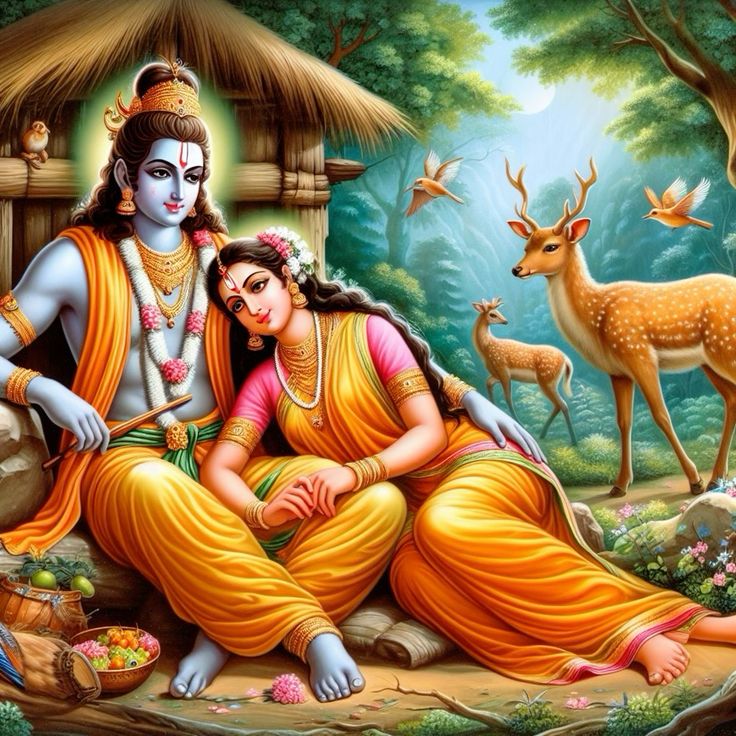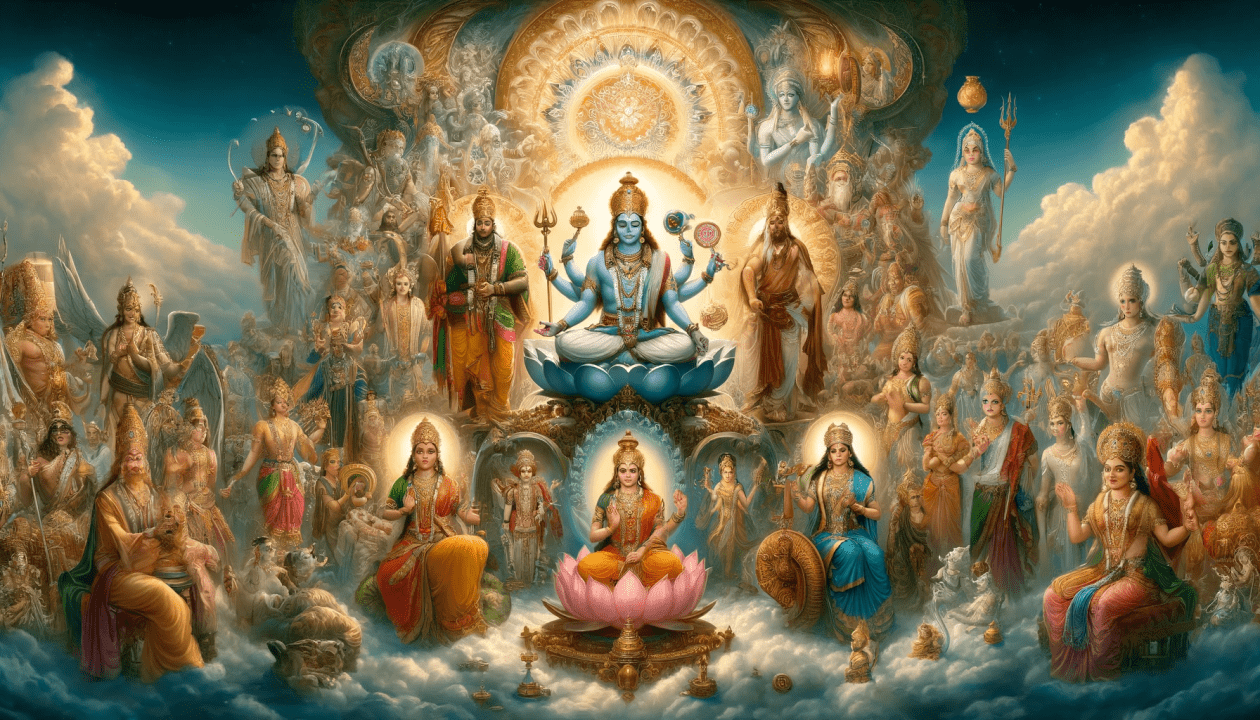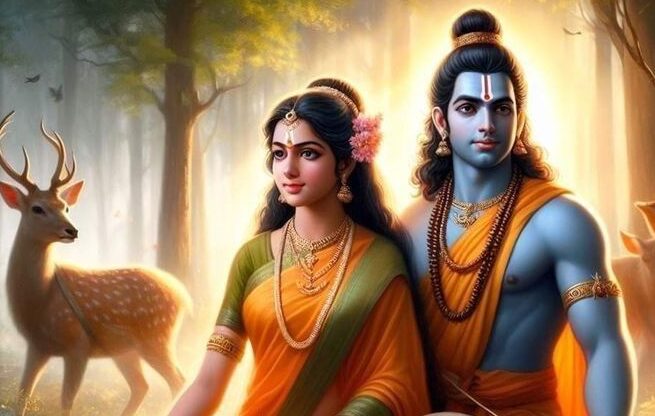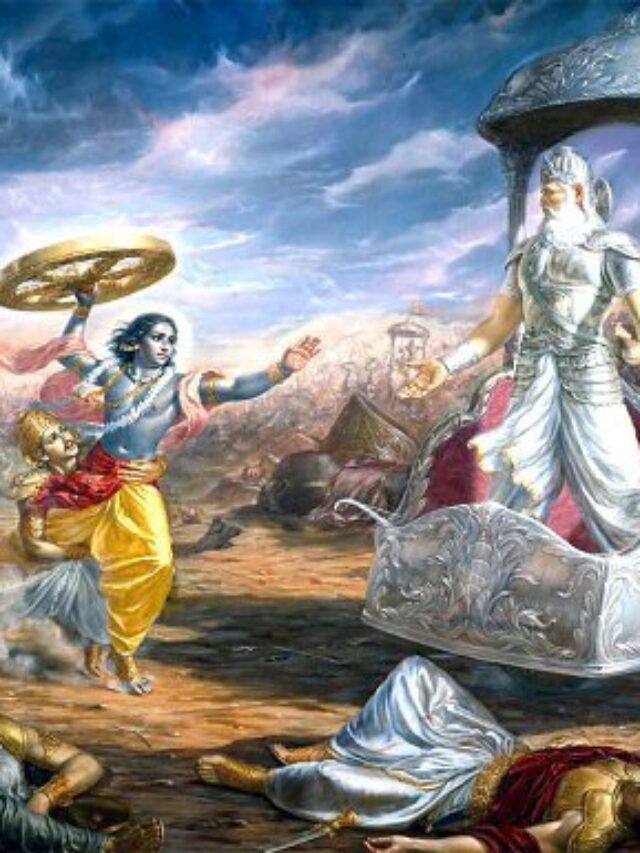

Table of Contents
The Ramayana: A Tale of Love, Duty, and Triumph
The Ramayana is more than just an ancient Indian epic—it is a story of emotions, choices, and moral dilemmas that continues to speak to us in profound ways. Written by the sage Valmiki, this epic traces the life of Lord Rama, his trials, his devotion, and his journey to rescue his beloved wife, Sita, from the demon king Ravana. But at its heart, the Ramayana is about something even bigger: it’s about the struggle between good and evil, love and sacrifice, duty and loyalty.
For centuries, the Ramayana has been much more than just a tale. It has shaped the lives and philosophies of people across generations, offering wisdom, comfort, and a sense of purpose. Even today, its themes continue to resonate, transcending time and place. The characters of the Ramayana—Rama, Sita, Lakshmana, Ravana, Hanuman, and others—are not just figures from mythology. They are reflections of the complexities of human life, with all its struggles, imperfections, and triumphs.
A Father’s Promise and a Son’s Sacrifice

At the beginning of the Ramayana, we are introduced to King Dasharatha, the ruler of Ayodhya, who longs for a son. After years of prayers and sacrifices, Dasharatha is blessed with four sons: Rama, the eldest, and his brothers Bharata, Lakshmana, and Shatrughna. Each son has his own virtues, but Rama, with his sense of duty, righteousness, and compassion, stands out.
Rama’s life, however, takes an unexpected turn when Dasharatha promises his wife Kaikeyi that her son, Bharata, will be crowned king. To fulfill this promise, Dasharatha is forced to exile Rama to the forest for fourteen years. This moment of heartbreak sets the stage for the entire epic. Rama, despite the injustice, does not protest. He accepts his father’s command without hesitation because, for him, his duty to his family and kingdom is above all else. He is an ideal son, a man of unwavering integrity.
Rama’s wife, Sita, and his loyal brother Lakshmana refuse to stay behind in Ayodhya while he suffers in exile. They, too, choose the path of devotion and love, joining Rama in the forest, where their lives will be forever changed
The Kidnapping of Sita
The Ramayana takes a darker turn when Sita is kidnapped by Ravana, the demon king of Lanka. Ravana, consumed by his desire for power and beauty, abducts Sita, taking her to his kingdom. This event, which at first seems like an act of pure villainy, sets in motion a series of events that test the characters of the story in unimaginable ways.
Rama, devastated but resolute, embarks on a journey to rescue Sita. In his search, he meets various characters, some of whom become his allies, like Hanuman, the monkey god. Hanuman is one of the most beloved characters in the Ramayana because of his extraordinary devotion to Rama. His loyalty is unmatched, and his courage knows no bounds.
Hanuman: The Ultimate Devotee

Hanuman’s role in the Ramayana is not just as a warrior, but as a symbol of devotion. When Hanuman learns that Sita is imprisoned in Lanka, he leaps across the ocean to find her. When he finally meets her, he reassures her that Rama will soon come to rescue her. His unwavering faith and courage during this mission are awe-inspiring.
Perhaps the most famous moment in Hanuman’s journey occurs when he sets fire to Lanka after Ravana’s forces capture him. This act of defiance shows not only Hanuman’s strength but also his fierce loyalty to Rama, who he sees as the embodiment of all that is good and righteous. Hanuman’s devotion to Rama is a shining example of pure love and selfless service, themes that run throughout the Ramayana.
The Battle with Ravana
The battle between Rama and Ravana is the epic’s most intense moment. After gathering an army of monkeys, bears, and allies, Rama marches to Lanka to rescue Sita. Ravana, with his immense strength and dark powers, presents a formidable challenge. Yet Rama, though seemingly outmatched, relies on his righteousness and his divine weaponry to defeat Ravana.
In the end, Ravana is slain, but the victory feels bittersweet. Ravana, for all his evil, was a complex character—once a wise and powerful king, he became consumed by his desires and pride. His downfall serves as a reminder of the dangers of unchecked power and the destructive nature of ego.
The Return to Ayodhya

After Ravana’s defeat, Rama, Sita, and Lakshmana return to Ayodhya, where Rama is finally crowned king. This moment should be one of ultimate joy, but it is not without its challenges. Despite Rama’s victory and his unquestionable integrity, rumors begin to spread about Sita’s time in Ravana’s captivity. Some doubt her purity, questioning whether she was faithful to Rama.
In a heartbreaking decision, Rama asks Sita to undergo a trial by fire—an Agni Pariksha—to prove her chastity. Sita emerges unscathed from the flames, showing that she was untouched by Ravana. Yet, despite this divine proof, she chooses to leave Rama and return to the earth. The pain of this moment is felt deeply, not just by Rama, but by all who have followed their journey.
The Meaning of Dharma and Duty
One of the most striking aspects of the Ramayana is how it explores the complexities of duty, or dharma. Rama is often seen as the ideal man, embodying the highest principles of dharma. His life is a constant balancing act between his love for his family, his duty as a son, and his role as a king. He never chooses the easy path, but rather the one that aligns with what is right.
However, the Ramayana also shows that dharma is not always clear-cut. The decisions made by Rama, Sita, and others are often fraught with emotional and moral tension. It is in these moments of doubt, sacrifice, and selflessness that the Ramayana becomes most relatable. The characters are not perfect; they are human, with all the flaws and virtues that come with being human. This makes their struggles even more meaningful to us.
The Legacy of the Ramayana

The Ramayana has had an enduring impact on cultures across India and Southeast Asia. Its stories have been adapted and retold in countless ways, from the grand performances of the Ram Lila to intricate dances in Bali and Thailand. But the epic’s true power lies in its universal themes of love, devotion, and righteousness.
The story of Rama and Sita continues to inspire devotion and moral reflection. In their journey, we see our own struggles—our desires, our sacrifices, and our hopes for a better world. Through their lives, we learn that true victory is not in the defeat of others but in the steadfast pursuit of righteousness, no matter the cost.
Conclusion
The Ramayana is not just a story of gods and demons; it is a story of humanity. It teaches us that life is filled with challenges, and how we respond to those challenges defines who we are. Whether it is Rama’s sacrifice, Sita’s loyalty, or Hanuman’s devotion, the characters of the Ramayana embody qualities that resonate with us on a deeply human level.
Even in today’s world, the lessons of the Ramayana remain as relevant as ever. The struggle between good and evil, the importance of love and loyalty, and the idea that we must always strive to do what is right, even in the face of great adversity, are timeless lessons that continue to guide us. The Ramayana shows us that while life may be full of hardship, it is also full of grace, and through devotion to righteousness, we can overcome the darkest of trials.



